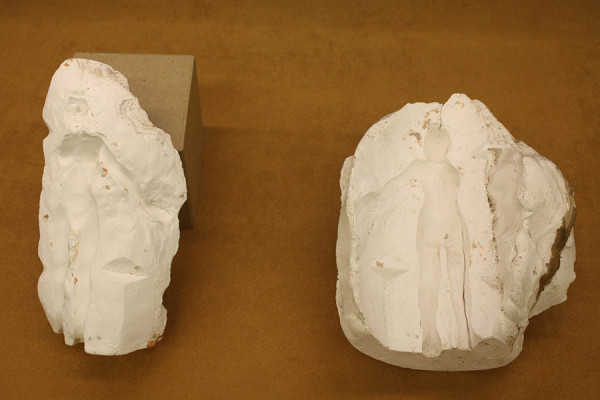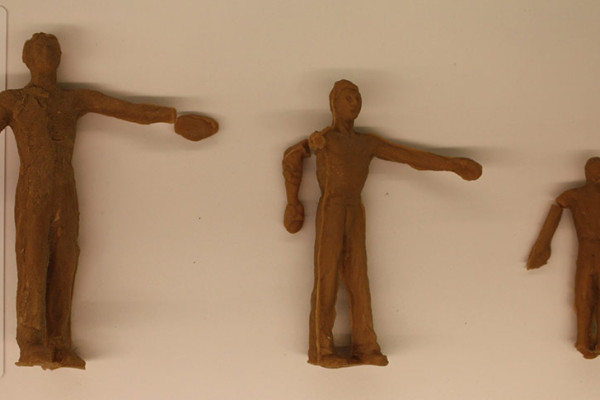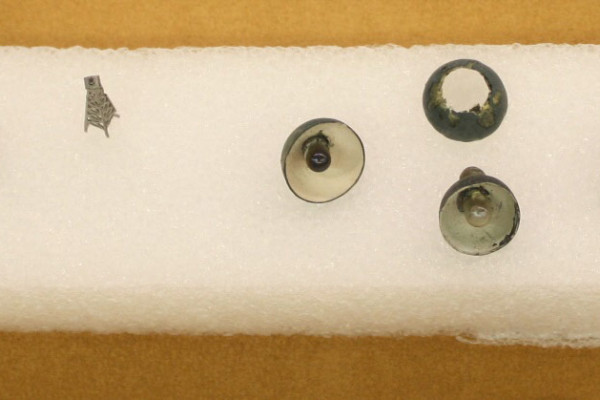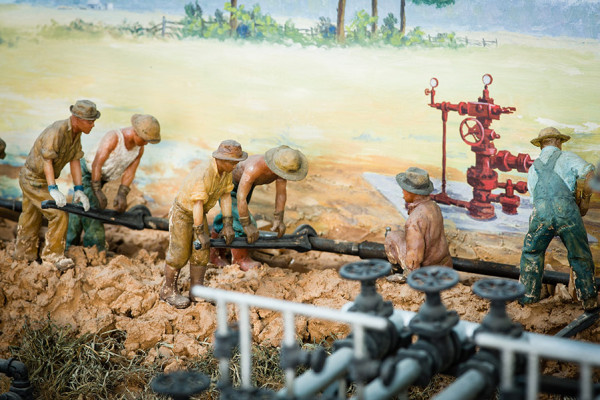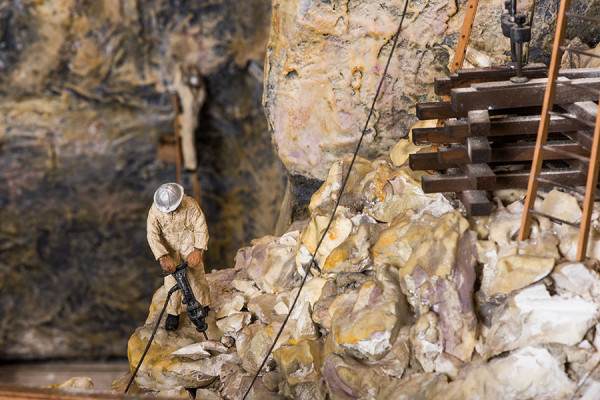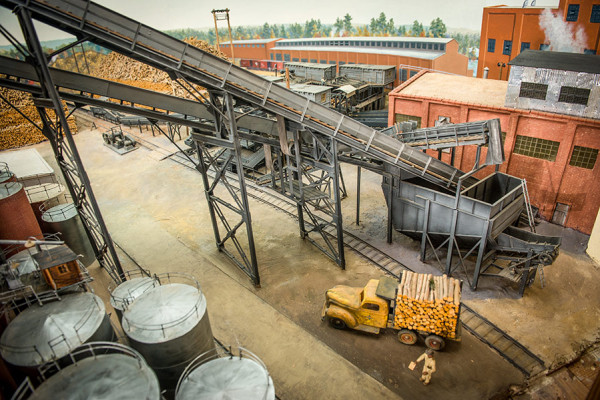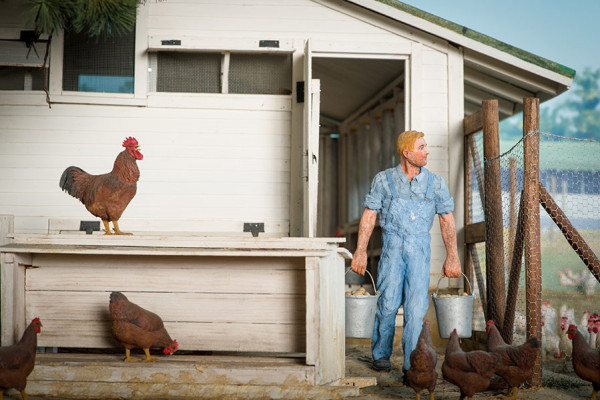Designing the Dioramas
A diorama is a three-dimensional artwork that combines the disciplines of sculpture and painting, with construction, lighting and design. Extensive research is crucial and based on photographs taken from actual locations around the state. Each industry represented has photographs above the diorama.
The museum has 23 dioramas – three are life-sized natural history scenes, and the remainder show miniature scenes of Louisiana agriculture, industry and natural resources. They are 1/8 actual size (1.5 inches = 1 foot). However, figures are reduced in size to enhance the perspective, so those in the back of the diorama are smaller than the figures in front.
A Team of Artists for the Dioramas
The museum employed numerous artists to construct the dioramas. Some artists designed the clothing for the figures – shirts, pants, shoes and hats were all hand-colored and shaped to the figures. Working together as a team, they completed five dioramas by State Fair opening in October, 1939.
E.J. Whetzle, Edward Wilkerson and H.B. Wright were all experienced diorama artists. They painted the landscapes in the background of the dioramas and made plaster of Paris molds for the people and all the animals in the dioramas. Metal rods supported the figures in the mold, while the artist poured hot beeswax in the top of the mold. When still warm, the artist removed the figures and shaped them into different poses. Artists painted clothes on the figures and created individual portraits for the faces.
Hans Manglesdorf was a well-known sculptor and painter from Germany who lived in New Orleans, where he was a member of the Arts and Crafts League. He worked on the Industrial dioramas, and supervised the male NYA workers on constructing diorama details. He taught art classes to the public in the basement.
Mrs. Eva Newsom was a sculptor who studied in New Orleans during the 1930’s. She worked at the museum for several years on the Agricultural dioramas – designing figures, painting faces and clothing, and arranging the scenery. She supervised the female NYA workers who performed all the detail work – the plants, forage and the pine trees.
Steve Sanchez was a master model builder who attended Byrd High School in 1939. He designed and constructed the machinery, buildings and props in a shop in the basement. When the War began in 1941, Whetzle, Manglesdorf, and Sanchez joined the armed services. Only Sanchez returned to Shreveport and continued to work with H.B. Wright at the museum until 1963.
The National Youth Administration (NYA) was a federally funded work program during the Depression. In 1939, the Louisiana Department of Agriculture hired diorama workers and provided housing on Hearne Avenue for the males, and the females lived on the State Fair grounds. The program lasted until 1941.
Click to view full image
Diorama Details
In 1948, Steve Sanchez, Jim Smith and H.B. Wright created the Forestry and Paper Mill diorama. One of their student workers, Ms. Jamie Lee Flory Hurst, recently returned to visit the museum and speaks about working on the diorama in her interview.


